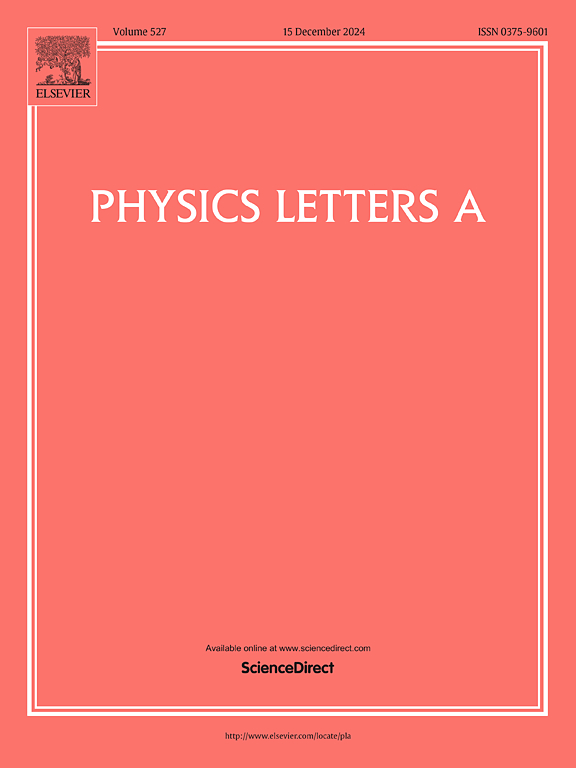Defected ground structure-based circularly polarized MIMO filtering dielectric resonator antenna
IF 2.3
3区 物理与天体物理
Q2 PHYSICS, MULTIDISCIPLINARY
引用次数: 0
Abstract
The alumina ceramic is applied to a circularly polarized (CP) filtering dielectric resonator antenna (FDRA) and a multiple-input multiple-output (MIMO) FDRA in this paper. Initially, an optimally performing band-pass filter is engineered and amalgamated with a Wilkinson power divider to establish a filtering feed network. The rectangular dielectric resonator is used as the radiating unit and is excited by the filtering feed network. The proposed CP FDRA demonstrates a relative impedance bandwidth of 37.24 %, a relative axial ratio bandwidth of 32.51 %, a peak gain of 6.08 dBi, and a maximum antenna efficiency of 94.17 %. Subsequently, the single FDRA is expanded into a two-port MIMO antenna. To augment the isolation and CP performance, an innovative defected ground structure is utilized between the dual radiation units. Moreover, the surface current is channeled to fourteen circular copper patches on the back of the substrate via fourteen conductive copper pillars. Following fabrication and soldering, the empirical results corroborate the simulation outcomes. The measured relative impedance bandwidth is 35.83 %, with the maximum isolation reaching 28.23 dB. The proposed MIMO antenna demonstrates exceptional isolation, a broad operating bandwidth, and effective out-of-band rejection, rendering it suitable for integration into the communication infrastructures of fifth-generation and wireless local area networks.
基于缺陷接地结构的圆极化MIMO滤波介质谐振器天线
本文将氧化铝陶瓷应用于圆极化(CP)滤波介质谐振器天线(FDRA)和多输入多输出(MIMO) FDRA。首先,设计一个性能最佳的带通滤波器,并与威尔金森功率分配器合并,以建立滤波馈电网络。采用矩形介质谐振器作为辐射单元,由滤波馈电网络激励。所提出的CP FDRA相对阻抗带宽为37.24%,相对轴比带宽为32.51%,峰值增益为6.08 dBi,最大天线效率为94.17%。随后,单个FDRA扩展为双端口MIMO天线。为了提高隔离和CP性能,在双辐射单元之间采用了一种创新的缺陷地面结构。此外,表面电流通过14根导电铜柱被引导至基片背面的14个圆形铜片。在制作和焊接之后,实验结果证实了模拟结果。测量的相对阻抗带宽为35.83%,最大隔离度达到28.23 dB。所提出的MIMO天线具有卓越的隔离性、宽的工作带宽和有效的带外抑制,适合集成到第五代和无线局域网的通信基础设施中。
本文章由计算机程序翻译,如有差异,请以英文原文为准。
求助全文
约1分钟内获得全文
求助全文
来源期刊

Physics Letters A
物理-物理:综合
CiteScore
5.10
自引率
3.80%
发文量
493
审稿时长
30 days
期刊介绍:
Physics Letters A offers an exciting publication outlet for novel and frontier physics. It encourages the submission of new research on: condensed matter physics, theoretical physics, nonlinear science, statistical physics, mathematical and computational physics, general and cross-disciplinary physics (including foundations), atomic, molecular and cluster physics, plasma and fluid physics, optical physics, biological physics and nanoscience. No articles on High Energy and Nuclear Physics are published in Physics Letters A. The journal''s high standard and wide dissemination ensures a broad readership amongst the physics community. Rapid publication times and flexible length restrictions give Physics Letters A the edge over other journals in the field.
 求助内容:
求助内容: 应助结果提醒方式:
应助结果提醒方式:


